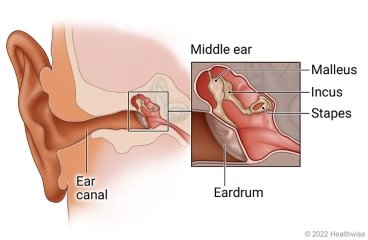
Stapedectomy is a delicate ear surgery performed to improve hearing loss caused by otosclerosis, a condition where the stapes bone in the middle ear becomes fixed and cannot vibrate properly. This prevents sound from reaching the inner ear effectively.
Understanding the Problem: Otosclerosis
- The stapes is the third and smallest bone in the middle ear.
- In otosclerosis, abnormal bone growth around the stapes fixes it in place.
- This causes conductive hearing loss, where sound can’t travel from the eardrum to the cochlea.
🏥 What Is a Stapedectomy?
- The immobile stapes bone is removed and replaced with a tiny prosthesis.
- The prosthesis bypasses the stapes and transmits sound vibrations directly to the inner ear.
- Typically performed under local or general anesthesia using a microscope.
⚙️ Steps of the Procedure
- A small incision is made in the ear canal or behind the ear.
- The eardrum is lifted to access the middle ear.
- The stapes bone is carefully removed (or a hole is made in it — stapedotomy).
- A prosthetic piston is inserted and attached to the incus (another middle ear bone).
- The eardrum is repositioned.
⏱️ Recovery
- Outpatient procedure (go home the same day).
- Mild dizziness or imbalance for a few days.
- Avoid blowing your nose or getting water in your ear for several weeks.
- Most people return to normal activities in 1–2 weeks.
🎧 Expected Benefits
- Significant hearing improvement in over 90% of patients.
- Better sound clarity and reduced need for hearing aids.
- Some people may still need a hearing aid for best results.
⚠️ Risks and Complications
- Tinnitus (ringing in the ears)
- Dizziness or vertigo (usually temporary)
- Taste disturbances (due to nearby nerve irritation)
- Facial nerve injury (rare)
- Sensorineural hearing loss (1–2% risk of permanent inner ear damage)

